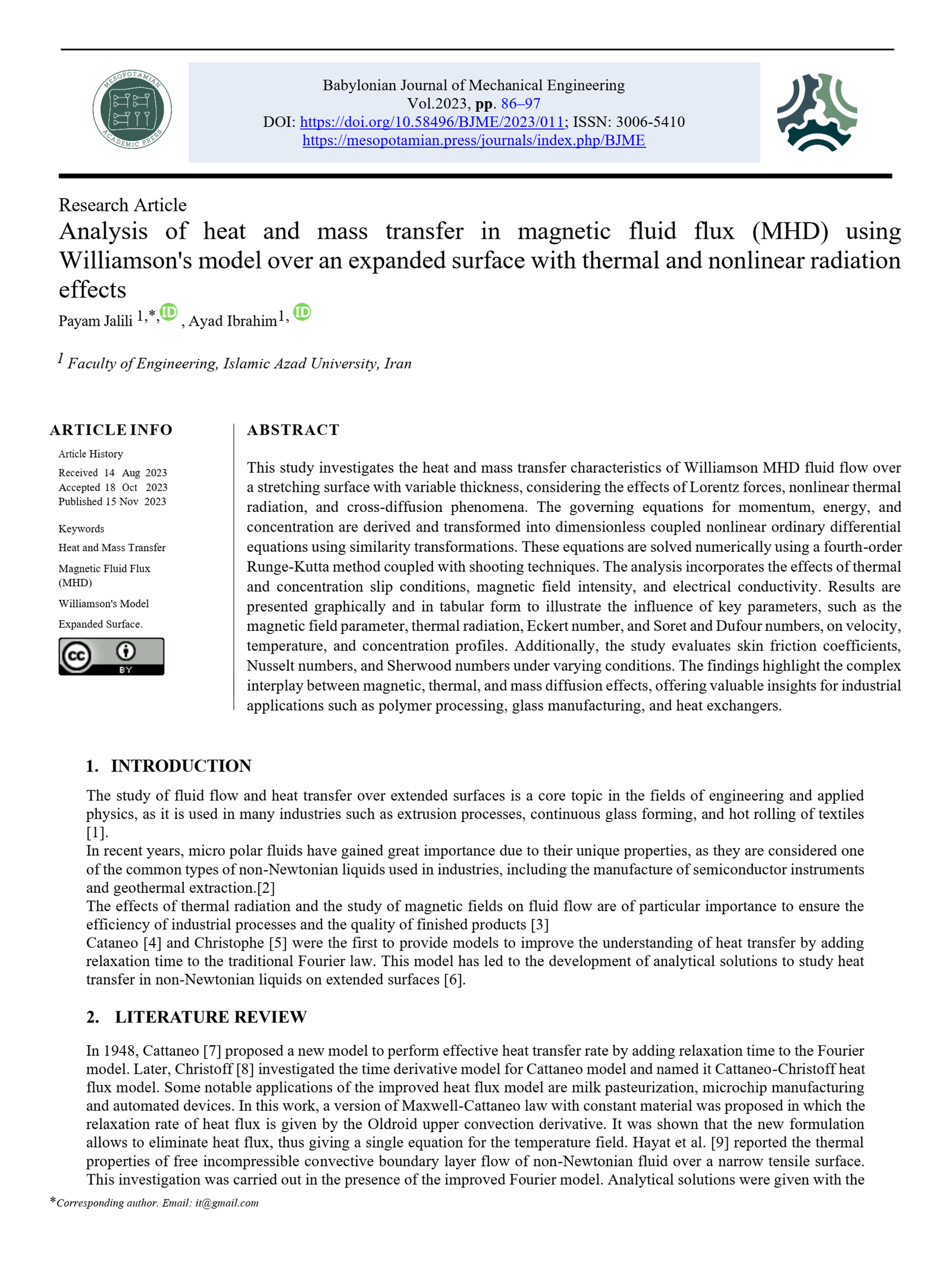Analysis of heat and mass transfer in magnetic fluid flux (MHD) using Williamson's model over an expanded surface with thermal and nonlinear radiation effects
Main Article Content
Abstract
This study investigates the heat and mass transfer characteristics of Williamson MHD fluid flow over a stretching surface with variable thickness, considering the effects of Lorentz forces, nonlinear thermal radiation, and cross-diffusion phenomena. The governing equations for momentum, energy, and concentration are derived and transformed into dimensionless coupled nonlinear ordinary differential equations using similarity transformations. These equations are solved numerically using a fourth-order Runge-Kutta method coupled with shooting techniques. The analysis incorporates the effects of thermal and concentration slip conditions, magnetic field intensity, and electrical conductivity. Results are presented graphically and in tabular form to illustrate the influence of key parameters, such as the magnetic field parameter, thermal radiation, Eckert number, and Soret and Dufour numbers, on velocity, temperature, and concentration profiles. Additionally, the study evaluates skin friction coefficients, Nusselt numbers, and Sherwood numbers under varying conditions. The findings highlight the complex interplay between magnetic, thermal, and mass diffusion effects, offering valuable insights for industrial applications such as polymer processing, glass manufacturing, and heat exchangers
Article Details
Issue
Section

This work is licensed under a Creative Commons Attribution 4.0 International License.
